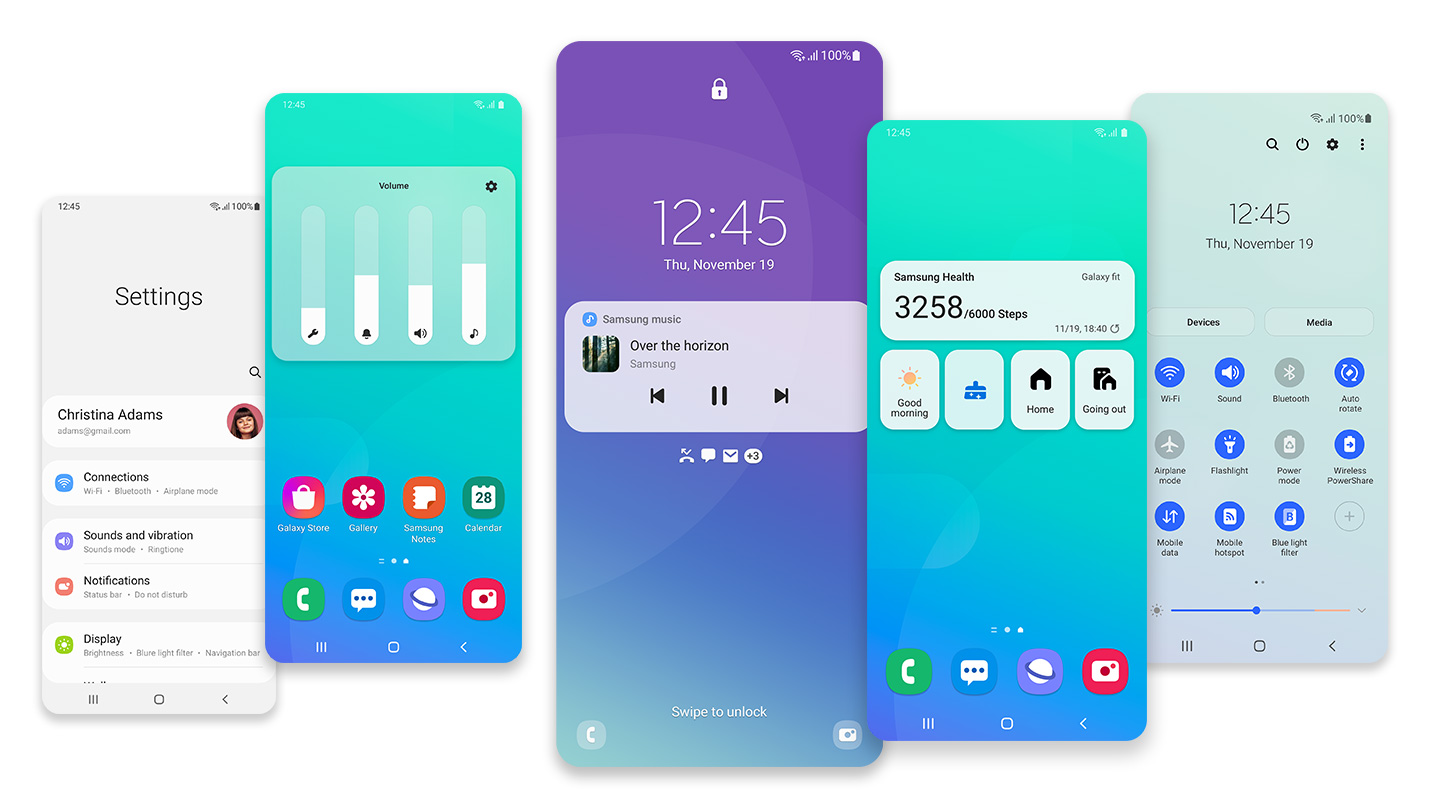One UI is a software developed by Samsung Electronics for its Android devices running Android 9 “Pie” and higher and Windows devices running Windows 11 and higher. The main motive behind One UI is to give users the best experience with respect to the previous Samsung Experience and Touchwiz which are their predecessors.
It was announced at Samsung’s developer conference in 2018 and was revealed in Galaxy unpacked in February 2019 alongside with Galaxy S10 series, Galaxy buds, and Galaxy Fold.
It is designed to make larger smartphones look more visually appealing. As it is designed on the top of Android 9(Pie) so it inherits all its basic properties of it,
There is plenty to talk about Samsung features but where do you start? Now here we got a catch to talk about some noteworthy features of One UI.

Evolution of One UI
Talking about Samsung Experience which has been one of the better Android skins around for a long back, and that too offers a variety of useful features that enhanced the user experience to make the Samsung a more adaptive device than ever. But Samsung One UI has emerged as the old skin’s replacement, launching on new phones (like the Galaxy S10) and coming to older devices alike.
Best of Samsung One UI features
- A more versatile Samsung DeX
- Secured Folder
- Lift-to-wake functionality
- Disable the Bixby button (kind of)
- Game tools and Game Launcher
- System-wide dark mode
- Gesture navigation
- Dual messenger
- One-handed use
- Edge Screen
The version history of One UI
One UI 1.0
It is the first version of One UI and it has launched on top of Android 9, as it brought up many new features so frequently popularity among users because it gives the user a completely new experience.
Features that gaining hiped compared to stock Android devices.
- Dark mode
- Screenshot editing tool
- Refinement to Always on Screen mode(AOD)
- Enhance gesture support
- An upgraded Bixby with support for remapping the Bixby button
One UI 1.1
This brings a minor update to One UI 1.0 which fixes facial recognition stability, Camera, and fingerprint, and improves performance optimizations.
One UI 1.5
It comes up with another minor update, especially for Galaxy smartwatches, and does provide native Link to Windows support. It launched with the Galaxy Note10 series devices on August 23, 2019.
One UI 2.0
The second-generation update to One UI (powered by Android 10), provides Galaxy users with a skinned Digital Wellbeing experience, a more refined UI in some default apps such as Device Care, a minor UI change to the clock position in quick settings, a native screen recorder, the new Android 10 gesture system, Dynamic Lock Screen (different wallpaper with every unlock), a Trash folder in Files, native Android Auto, and harder Location permission access. OneUI 2.0 has already rolled out to Galaxy S10, Note10, Galaxy S9, and Note9 on December 3, 2019, range.
One UI 2.1
It is basically the minor update in One UI 2.0, which brings support for Galaxy devices that support 120 Hz refresh rate, Quick Share, Music Share, additional camera modes, and native support for Live Captions. It is first launched with the Galaxy S20 series devices & Galaxy Z Flip along with other devices such as the Galaxy S9, Note9, S10, Note10, Galaxy Fold, and select Galaxy A (2020) devices as a software update.
One UI 2.5
One UI 2.5 doesn’t bring any radical change to UI but there are plenty of new feature additions to the camera, DeX, gesture navigation, and other services, it is rolled out on August 21, 2020, with Galaxy Note 20 series.
One UI 3.0
It is based on top of Android 11 and was released for Galaxy S20 devices beginning December 2, 2020, it brings noteworthy update revisions including a translucent notification panel, new volume controls positioned on the right or left of the device alongside the physical volume keys, slightly enhanced widgets, and smoother animations and transitions throughout the whole UI.

One UI 3.1
It is a minor update to One UI 3.0, which enriches the functionality of the camera such as improved touch autofocus and auto exposure controller and improved Single Take feature and software implementations, first released with the Galaxy S21 series.
One UI 4.0
It is based on Android 12, which is the fourth generation of One UI. It was released to the Galaxy S21 Series on November 16, 2021. One UI 4 focuses on customization, privacy, and access to Samsung’s expanding ecosystem.
One UI 4.1
One UI 4.1 is a minor update for One UI 4, which was first released with the Samsung Galaxy S22 series. It doesn’t bring any big changes, but some features like Smart Calendar, added option to choose how much virtual RAM is desired (from 2, 4, 6, or 8 GB), redesigned palette picker, Smart Widgets, separate Left/Right audio balance, extra brightness toggle, Pro Mode on more cameras, Night Mode portraits, and other minor changes.
One UI 4.5
It is based on Android 12L, a major update for One UI 4, which was first released with the Galaxy Z Fold 4 on August 10, 2022. Feature added in this: New emojis 14.0 such as Melting Face, Saluting Face, Mirror Ball, Beans, and more.